What is Virtual Reality and Can it Help with My Neurorecovery?
By Liz Fuhrhop, Doctor of Physical Therapy and Clinical Support Specialist for MYOLYN
What is Virtual Reality (VR)?
Virtual reality (VR) is defined as the “computer-simulation of an environment that can imitate a physical presence in real or imagined worlds” [1]. To interact within virtual environments, users create an avatar, or figure, which represents one’s physical presence. Displaying the VR environment can simply involve a computer or tablet screen (sometimes referred to as “non-immersive” VR), but more immersive options used primarily in research labs may involve surround screen displays (“semi-immersive”) or head-mounted displays (“fully-immersive”) [2].
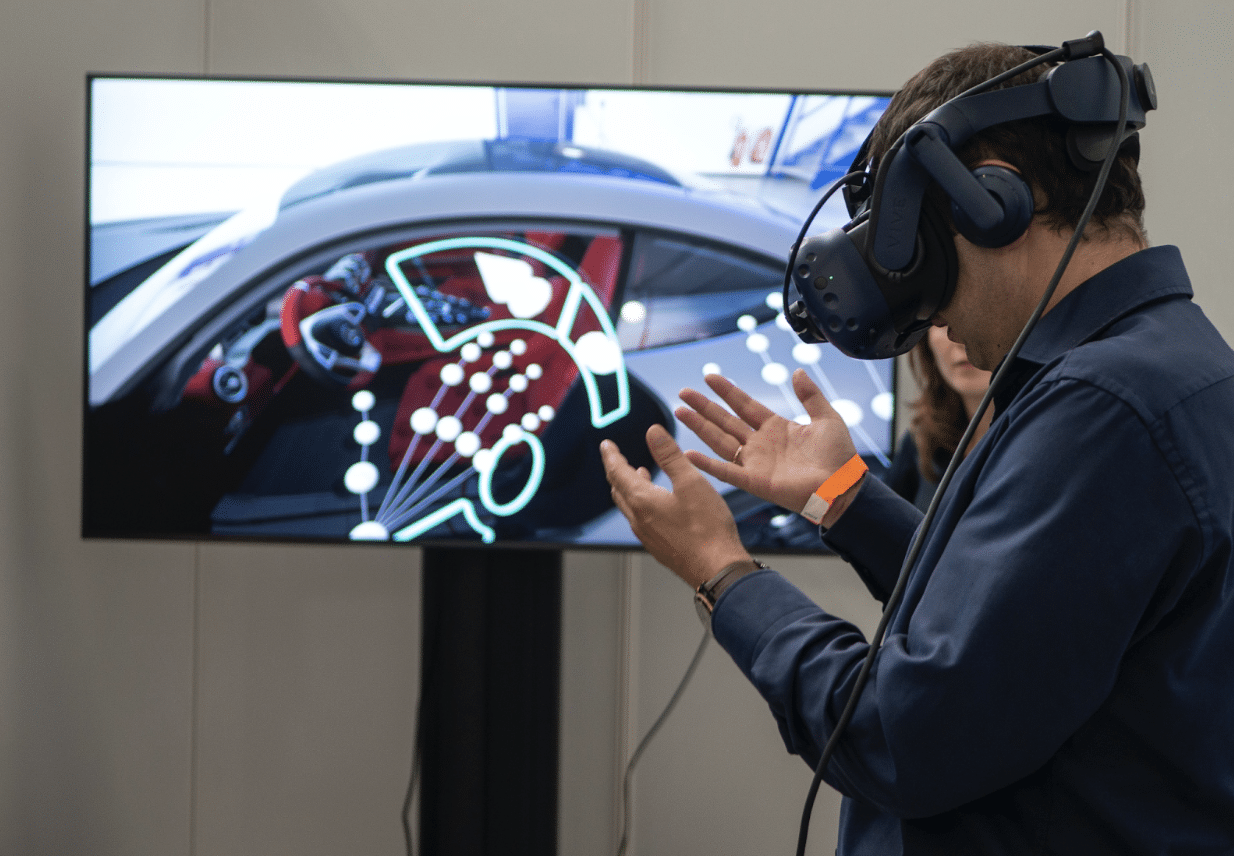
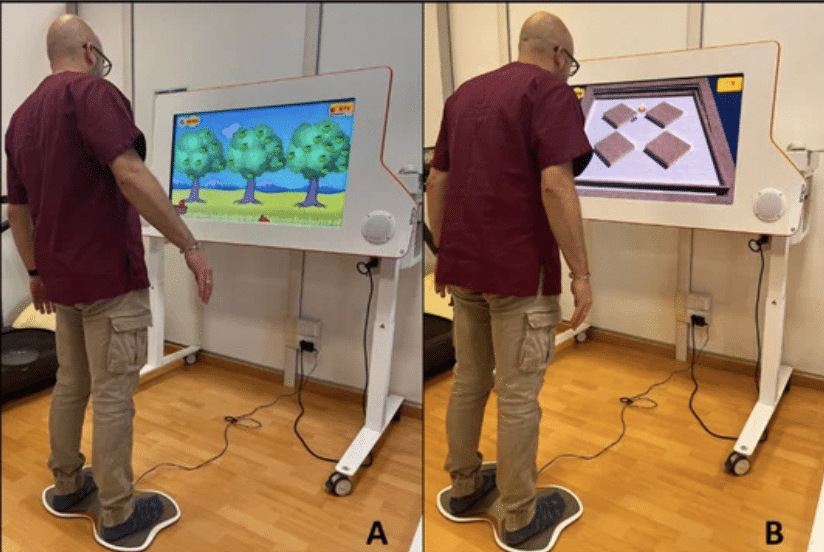
(https://www.mdpi.com/1660-4601/19/22/14818)
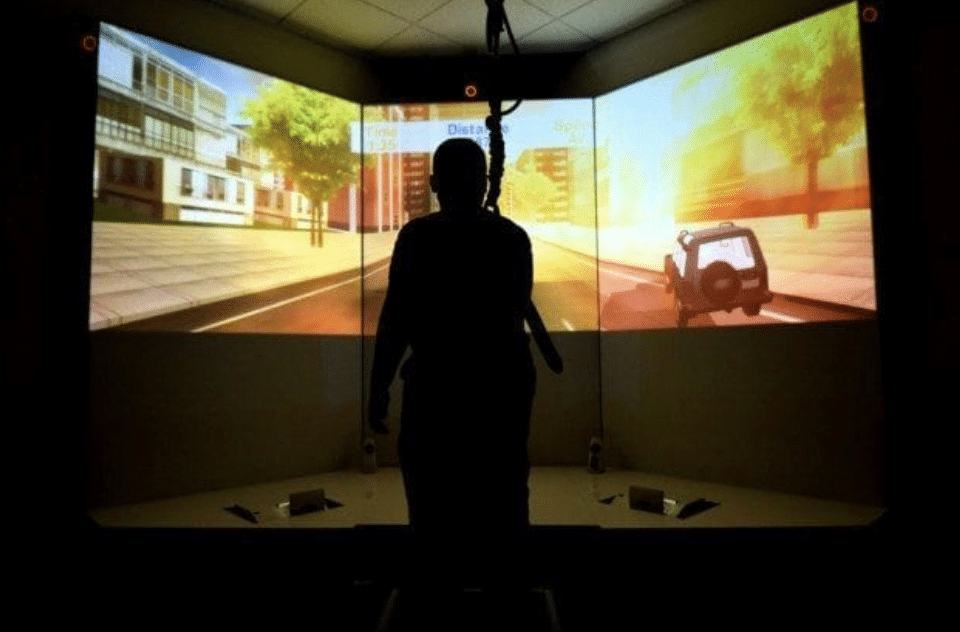
(https://www.northboulderpt.com/blog/virtual-reality-coming-physical-therapy-session/)
The use of VR in the context of neurorehabilitation has many potential benefits- including providing patients the opportunity to complete novel tasks with a high degree of repetition which may not be possible in the real world, as well as gamification and exciting environments which may be seen as less boring, more engaging and more motivating than traditional therapy approaches. Studies also show that VR can be effectively incorporated into home programs, allowing patients to continue their training and recovery even after discharge from formal therapy services.
At MYOLYN, we’re excited to announce that the MyoCycle V2 is now compatible with Zwift and other virtual cycling platforms- allowing home and clinic users to ride or compete with other MyoCyclists in real-time through immersive 3D environments!
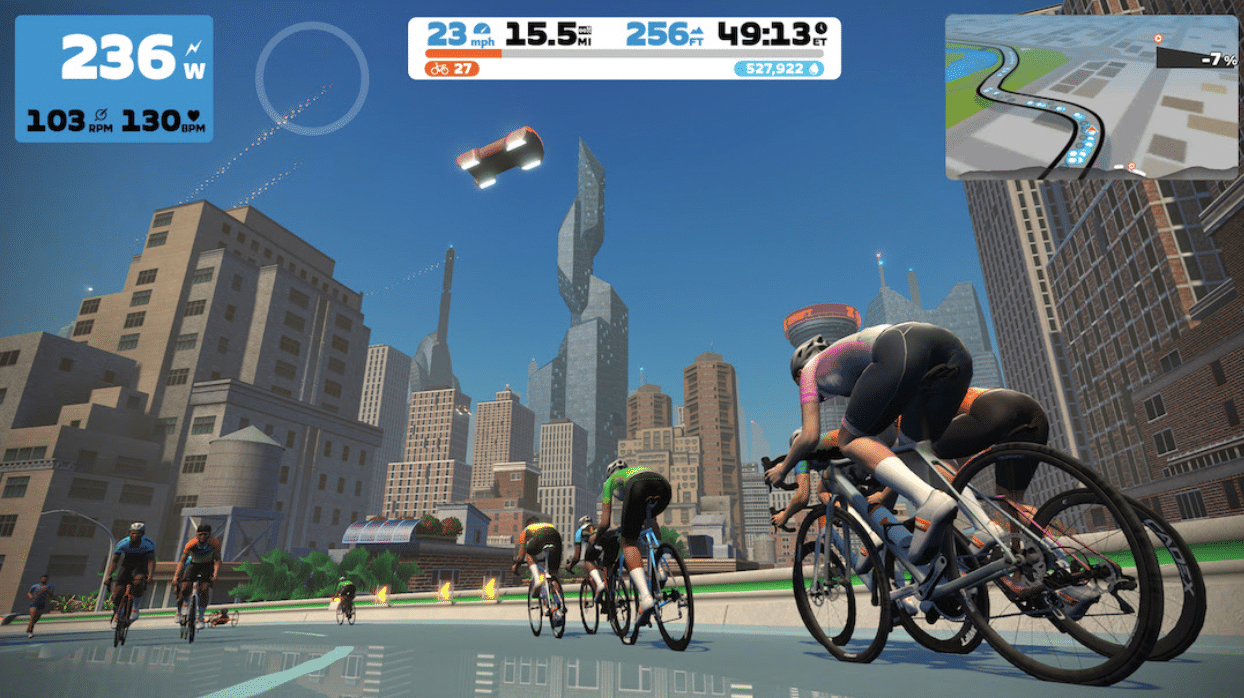
As VR becomes more widely available and increasingly sophisticated, the clinical research investigating its use in neurorehabilitation is growing quickly. Below is a short review of studies involving the use of VR, categorized by condition.
Stroke
When used in post-stroke rehabilitation, VR has shown potential for improving dynamic balance, upper limb function and dexterity, and gait [1,4]; though continued research efforts are necessary to determine the best methods and delivery to maximize functional outcomes.
A review of the available studies for VR rehabilitation techniques in post-stroke therapy was published in 2017 and indicated that the use of VR did not result in greater improvements compared to traditional therapy, however when combined with usual care, VR was shown to have better results in arm functioning [2]. Since 2017, additional studies have emerged with more promising results; these studies utilized greater dosage (i.e more repetitions, longer treatment times, etc.) and reflect the broader trends seen in post-stroke therapy which indicate that therapy at greater intensities yield better results [2].
More recently, a review of studies using VR on patients after stroke indicated that the use of VR may induce positive changes in the brain (neuroplasticity). These changes include improved interaction between the left and right hemispheres of the brain, greater activation of the affected side of the brain during movement of the weaker limb, as well as increased connectivity between different areas of the brain [3]. While preliminary studies indicate that the use of VR may magnify these improvements in brain organization greater than traditional therapy, further study is still needed to make more definitive conclusions.
Multiple Sclerosis
For people with multiple sclerosis (MS), studies show that incorporating VR into the plan of care may have significant benefits. A review of seven randomized controlled trial studies involving 209 people with MS showed that the use of VR to train balance resulted in improved scores on the Berg Balance Scale compared to conventional therapy [5], suggesting the use of VR may be better than traditional approaches to improve balance. Another recent review of nine randomized controlled trial studies showed that use of VR was as good or better than conventional therapy in fostering improvements in the areas of fatigue, quality of life, and balance, though there did not appear to be any advantage in using VR to improve functional mobility [6].
Parkinson’s Disease
The use of VR in managing Parkinson’s disease has also been well researched over the past decade; three separate reviews of the literature have each shown that use of VR can improve gait, balance, and quality of life as much as or more than traditional rehabilitation methods [7,8,9].
Spinal Cord Injury
Results from recent publications analyzing the use of VR in rehabilitation after spinal cord injury (SCI) appear promising. While this review indicates that the use of VR may not be more effective than usual physical therapy approaches for improving functional performance [10], this structured review of the literature found that use of VR demonstrated significant benefit in functional reaching, balance, gait speed, muscle strength, and walking ability. The latter review, however, did concede that the studies included were limited in quality and scope [11]. Another review analyzed the use of VR, using both semi and non-immersive VR displays, to improve balance post-SCI, and found that VR combined with conventional therapy interventions may be more effective [12].
A pilot study from 2019 investigated the use of an FES cycle combined with virtual cycling racing in participants with incomplete spinal cord injury. The use of VR was included to help encourage voluntary effort, and the study indicated that both chronic and subacute participants showed improvements in their motor scores [13].
Get the benefits of this research at home!
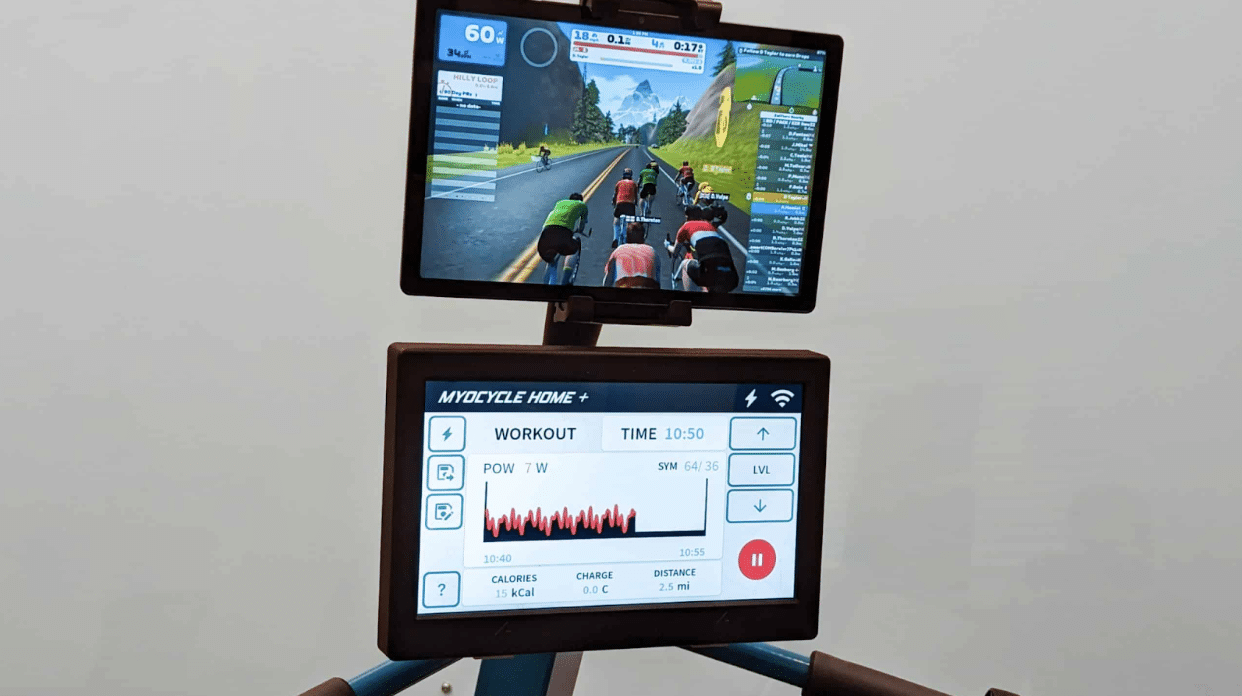
The MyoCycle V2 system was recently upgraded to be compatible with virtual cycling applications, allowing both clinicians and home users to take advantage of the potential benefits of virtual reality seen in the research and further maximize their training! Learn more about the benefits of FES cycling plus VR with the MyoCycle here.
Sources:
- Howard, M. C. (2017). A meta-analysis and systematic literature review of virtual reality rehabilitation programs. Computers in Human Behavior, 70, 317–327. https://doi.org/10.1016/j.chb.2017.01.013
- Muhammed Enes Gunduz, Bilal Bucak, & Keser, Z. (2023). Advances in Stroke Neurorehabilitation. Journal of Clinical Medicine, 12(21), 6734–6734. https://doi.org/10.3390/jcm12216734
- Hao, J., Xie, H., Harp, K., Chen, Z., & Siu, K.-C. (2021). Effects of virtual reality intervention on neural plasticity in stroke rehabilitation: a systematic review. Archives of Physical Medicine and Rehabilitation, 103(3). https://doi.org/10.1016/j.apmr.2021.06.024
- Demeco, A., Zola, L., Frizziero, A., Martini, C., Palumbo, A., Foresti, R., Buccino, G., & Costantino, C. (2023). Immersive Virtual Reality in Post-Stroke Rehabilitation: A Systematic Review. Sensors, 23(3), 1712. https://doi.org/10.3390/s23031712
- Calafiore, D., Invernizzi, M., Ammendolia, A., Marotta, N., Fortunato, F., Paolucci, T., Ferraro, F., Curci, C., Cwirlej-Sozanska, A., & de Sire, A. (2021). Efficacy of Virtual Reality and Exergaming in Improving Balance in Patients With Multiple Sclerosis: A Systematic Review and Meta-Analysis. Frontiers in Neurology, 12. https://doi.org/10.3389/fneur.2021.773459
- Nascimento, A. S., Fagundes, C. V., Mendes, F. A. dos S., & Leal, J. C. (2021). Effectiveness of Virtual Reality Rehabilitation in Persons with Multiple Sclerosis: A Systematic Review and Meta-analysis of Randomized Controlled Trials. Multiple Sclerosis and Related Disorders, 54, 103128. https://doi.org/10.1016/j.msard.2021.103128
- Lei, C., Sunzi, K., Dai, F., Liu, X., Wang, Y., Zhang, B., He, L., & Ju, M. (2019). Effects of virtual reality rehabilitation training on gait and balance in patients with Parkinson’s disease: A systematic review. PLOS ONE, 14(11), e0224819. https://doi.org/10.1371/journal.pone.0224819
- Triegaardt, J., Han, T. S., Sada, C., Sharma, S., & Sharma, P. (2019). The role of virtual reality on outcomes in rehabilitation of Parkinson’s disease: meta-analysis and systematic review in 1031 participants. Neurological Sciences, 41(3), 529–536. https://doi.org/10.1007/s10072-019-04144-3
- Wang, W., Wong, S. S. L., & Lai, F. H. Y. (2021). The effect of virtual reality rehabilitation on balance in patients with parkinson’s disease: A systematic review and meta-analysis. Electronics (Switzerland), 10(9), 1003. https://doi.org/10.3390/electronics10091003
- De Miguel-Rubio, A., Rubio, M. D., Salazar, A., Camacho, R., & Lucena-Anton, D. (2020). Effectiveness of Virtual Reality on Functional Performance after Spinal Cord Injury: A Systematic Review and Meta-Analysis of Randomized Controlled Trials. Journal of Clinical Medicine, 9(7), 2065. https://doi.org/10.3390/jcm9072065
- Yeo, E., Chau, B., Chi, B., Ruckle, D. E., & Ta, P. (2019). Virtual Reality Neurorehabilitation for Mobility in Spinal Cord Injury: A Structured Review. Innovations in Clinical Neuroscience, 16(1-2), 13–20. https://www.ncbi.nlm.nih.gov/pmc/articles/PMC6450679/
- Miguel-Rubio, A. D., Rubio, M. D., Salazar, A., Moral-Munoz, J. A., Requena, F., Camacho, R., & Lucena-Anton, D. (2020). Is Virtual Reality Effective for Balance Recovery in Patients with Spinal Cord Injury? A Systematic Review and Meta-Analysis. Journal of Clinical Medicine, 9(9), 2861. https://doi.org/10.3390/jcm9092861
- Duffell, L. D., Paddison, S., Alahmary, A. F., Donaldson, N., & Burridge, J. (2019). The effects of FES cycling combined with virtual reality racing biofeedback on voluntary function after incomplete SCI: a pilot study. Journal of NeuroEngineering and Rehabilitation, 16(1). https://doi.org/10.1186/s12984-019-0619-4
